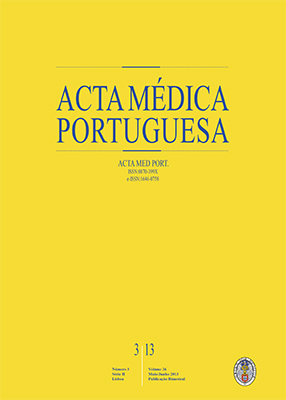Brachial Plexus Morphology and Vascular Supply in the Wistar Rat
DOI:
https://doi.org/10.20344/amp.4252Abstract
Introduction: The rat is probably the animal species most widely used in experimental studies on nerve repair. The aim of this work was to contribute to a better understanding of the morphology and blood supply of the rat brachial plexus.Material and Methods: Thirty adult rats were studied regarding brachial plexus morphology and blood supply. Intravascular injection and dissection under an operating microscope, as well as light microscopy and scanning electron microscopy techniques were used to define the microanatomy of the rat brachial plexus and its vessels.
Results: The rat brachial plexus was slightly different from the human brachial plexus. The arterial and venous supply to the brachial plexus plexus was derived directly or indirectly from neighboring vessels. These vessels formed dense and interconnected plexuses in the epineurium, perineurium, and endoneurium. Several brachial plexus components were accompanied for a relatively long portion of their length by large and constant blood vessels that supplied their epineural plexus, making it possible to raise these nerves as flaps.
Discussion: The blood supply to the rat brachial plexus is not very different from that reported in humans, making the rat a useful animal model for the experimental study of peripheral nerve pathophysiology and treatment.
Conclusion: Our results support the homology between the rat and the human brachial plexus in terms of morphology and blood supply. This work suggests that several components of the rat brachial plexus can be used as nerve flaps, including predominantly motor, sensory or mixed nerve fibers. This information may facilitate new experimental procedures in this animal model.
Downloads
Downloads
Published
How to Cite
Issue
Section
License
All the articles published in the AMP are open access and comply with the requirements of funding agencies or academic institutions. The AMP is governed by the terms of the Creative Commons ‘Attribution – Non-Commercial Use - (CC-BY-NC)’ license, regarding the use by third parties.
It is the author’s responsibility to obtain approval for the reproduction of figures, tables, etc. from other publications.
Upon acceptance of an article for publication, the authors will be asked to complete the ICMJE “Copyright Liability and Copyright Sharing Statement “(http://www.actamedicaportuguesa.com/info/AMP-NormasPublicacao.pdf) and the “Declaration of Potential Conflicts of Interest” (http:// www.icmje.org/conflicts-of-interest). An e-mail will be sent to the corresponding author to acknowledge receipt of the manuscript.
After publication, the authors are authorised to make their articles available in repositories of their institutions of origin, as long as they always mention where they were published and according to the Creative Commons license.









